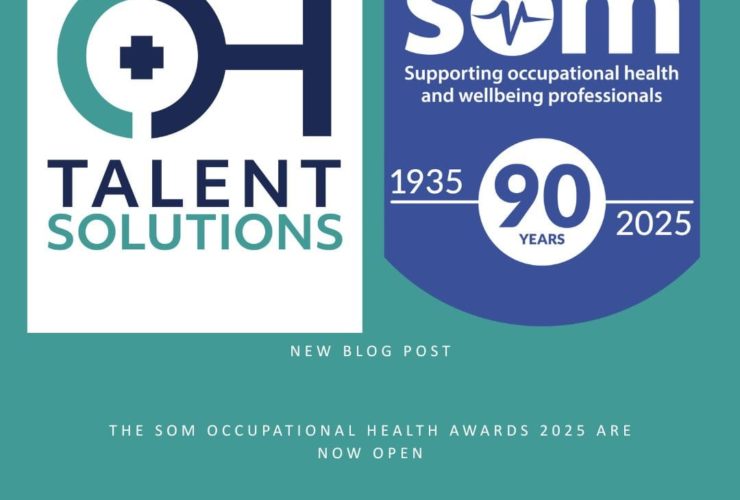The 2025 Employer National Insurance Changes: A Deep Dive into Occupational Health Sector Impact
How Employer National Insurance Changes Are Shaping the Occupational Health Sector
Understanding the Latest Adjustments
The occupational health (OH) sector is facing significant change as new employer National Insurance (NI) rules take effect.
According to the Office for National Statistics (ONS), these adjustments are influencing staffing budgets, recruitment trends, and service models across healthcare organisations.
Recent HMRC guidance introduced higher employer NI costs for many companies. As a result, organisations are re-evaluating workforce planning to manage the financial impact. The Institute for Employment Studies (IES) notes that healthcare, particularly occupational health, is among the most affected industries.
Why the Changes Matter
The updated contributions affect how employers forecast costs and allocate resources. Consequently, many OH providers are reviewing staffing levels and salary structures. By understanding these changes early, organisations can adapt before financial pressures escalate.
Moreover, the shift highlights the growing need for efficiency, innovation, and retention strategies in a market already facing staff shortages.
Recruitment Landscape Transformation
Research from the Chartered Institute of Personnel and Development (CIPD) reveals that:
67% of healthcare employers are reassessing recruitment strategies.
42% are trialling alternative staffing models.
31% are strengthening retention and engagement programmes.
These figures underline how the sector is evolving. Employers are now adopting more flexible, cost-conscious hiring practices to balance expenses with service quality.
Salary and Benefits Evolution
The NHS Employers Workforce Bulletin shows a visible shift in reward structures. Many organisations are:
Creating innovative pay and bonus schemes.
Enhancing non-monetary benefits, such as mental-health support and wellbeing programmes.
Offering hybrid and remote roles to attract wider talent pools.
Furthermore, these approaches help maintain morale and engagement during times of financial uncertainty.
Market Response and Industry Adaptation
A recent Faculty of Occupational Medicine survey found that:
73% of OH providers are redesigning staffing models.
58% are prioritising retention strategies.
45% are introducing flexible or hybrid schedules.
Similarly, the Society of Occupational Medicine (SOM) reports that many employers are responding through:
Strategic workforce planning.
Expanded professional development.
More creative recruitment campaigns.
Together, these measures show a proactive approach to meeting new cost pressures while protecting service quality.
Industry-Specific Solutions
Drawing on over two decades of OH recruitment experience, OH Talent Solutions has identified several strategies that help organisations stay resilient.
1. Flexible Staffing Solutions
Combine permanent and contract roles for agility.
Introduce hybrid and remote working arrangements.
Develop cross-skilling and mentoring programmes to optimise resources.
2. Cost-Effective Recruitment
Simplify hiring processes to reduce time and expense.
Utilise professional networks for faster, targeted sourcing.
Focus on long-term retention rather than quick placements.
These solutions allow employers to adapt quickly without compromising workforce stability.
Looking Ahead: Industry Projections
Despite tighter budgets, demand for occupational health services remains high. The Health and Safety Executive (HSE) predicts continued growth as organisations focus on wellbeing, compliance, and risk management.
Therefore, balancing financial control with service quality is becoming a defining skill for modern OH leaders. Providers that innovate will continue to thrive even under new fiscal pressures.
Practical Steps for Employers
1. Review Current Structures
Audit staffing models and identify cost drivers.
Assess financial implications of NI changes.
Target efficiency gains without reducing service standards.
2. Develop Adaptation Strategies
Build flexible workforce frameworks.
Implement retention initiatives that reward loyalty.
Strengthen the employer value proposition to stand out.
3. Future-Proof Your Organisation
Invest in leadership and skills development.
Maintain strong employee engagement.
Leverage technology to streamline recruitment and reporting.
Taking these actions ensures organisations remain competitive and compliant while supporting staff wellbeing.
Conclusion: Turning Challenge into Opportunity
While the employer National Insurance changes create short-term challenges, they also open doors for innovation.
Forward-thinking organisations that adapt their staffing models and retention plans will maintain a strong position in the market.
With a strategic approach, employers can protect budgets, retain skilled professionals, and deliver consistent, high-quality occupational health services.
Need Expert Support?
At OH Talent Solutions, we specialise in helping organisations adjust to shifting market conditions.
Our team provides expert recruitment advice, tailored workforce strategies, and access to a nationwide network of experienced occupational health professionals.
📞 Call us: 02393 871 484
📧 Email: info@ohtalentsolutions.co.uk
🌐 Visit: www.ohtalentsolutions.co.uk




